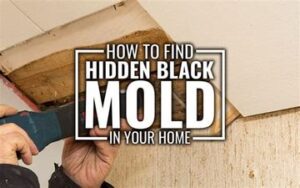What To Look For in Your Mold Free Home
Here are some tips on what to look for in your next mold free home
 Hopefully this article will help you give you a guideline on what to do to prevent mold from happening in the first place so you live in a mold free home.
Hopefully this article will help you give you a guideline on what to do to prevent mold from happening in the first place so you live in a mold free home.
Unfortunately, nothing is ever full-proof, you can only make your home mold resistant.
-
How can you tell if you have mold
Musty smell, black that does have to be tested since you don’t know if it’s mold, and then full-blown images of mold that you know 100% is mold.
-
Prevent moisture
Once you have moisture, mold LOVES to grow from that, so this is a very important. This means leaving your windows open a crack in the winter time, especially in rooms that have a lot of humidity like your kitchen and bathroom. Make sure that fan in your kitchen and bathroom works and that it’s on when you are cooking or taking your shower. In the summer you can have your windows open all the time. Running the AC is very costly anyway.
I don’t suggest a front loader washing machine, they often leave water sitting in the front and side rubber areas that then creates mold.
Make sure your dishes are dry before you put them away.
Make sure you have no leaks behind the wall of your shower or under or behind your dishwasher. That means hiring a good contractor, not someone who rushes through the job and causes the problem in the first place.
This is where leaks often occur and you can’t see them.
You can even have leaks two stories down from where the leak started, so once you find a leak, don’t assume it’s just a problem in that immediate area.
-
Ventilate
Especially in a hot humid country or state, use dehumidifiers and fans. Too many houses are built so airtight that there’s no air flow. That’s why in some of the poorer hot humid countries they have windows on every side of the home. You rarely see that in the US and Canada.
Vent your dryer and even stove to the outside so it doesn’t create humidity.
-
Roof
Never get a house with a flat roof where water pools and corrodes the roof and may drip down into your home.
-
Basement
If you have a house, it’s best to get them without a basement, although mold has been known to accumulate in attics too.
-
Sprinklers
Don’t let sprinklers spray onto your house, especially if you have a wooden house where the frame gets wet, produces mold, then that mold grows along the entire frame of the house.
-
Move Water Away from the House
Make sure you get water away from your house by removing leaves from the roof gutters and eaves troughs. And make sure your neighbor takes care of them too, because your house will be affected by their pooling water as well. Your eaves troughs need to work properly, be angled so they aren’t falling off, and the caps have to fit properly at the ends. If this isn’t taken care of, there will be surface water collecting around the walls of your house.
-
Food for Mold
Mold loves to feed off of wood and drywall, so building a home without those two materials is helpful. Any honest contractor will tell you that drywall is just like paper.
Concrete block housing is catching on as a way to prevent mold as it’s not a good food source for mold.
Dry any wet bedding, draperies, upholstered furniture, carpeting, shower walls and windowsills, wallpaper and ceiling tiles, as they are all good food sources for mold. If they can’t be dried out completely, or they already have mold growing on them, they have to go.
Disconnect your downspouts from the city sewers, and instead divert the downspout water far from the house foundation so it can drain into the ground away from the house. There are good reasons to do this both to reduce basement humidity, and to reduce your impact on the environment.
-
Prevention of mold
Keep mold away right from the very beginning which is much easier and less expensive than trying to get rid of mold after you have a problem in your home.
You want to:
- always look at the slope of the land the building is on. The land should slope away from the structure. If it slopes toward it water is going to flow toward the dwelling (faulty grade)
Here are books on mold and even air pollution
- My House is Killing Me – Link
- A Workbook for Detecting, Diagnosing, and Eliminating Pesky Pests, Stinky Stenches, Musty Mold, and Other Aggravating Home Problems – Link
Here are articles you can read to get more information when looking for a house to rent or buy
- https://www.mnn.com/money/green-workplace/stories/creating-a-mold-resistant-home
- https://www.care.com/c/stories/5937/creating-a-mold-free-home/
- http://www.builderonline.com/building/building-science/mold-free-model-home_o
- https://selfhacked.com/blog/the-optimal-health-achieving-peak-performance-and-healing/
- https://www.sinusitiswellness.com/tips-on-surveilling-a-home-to-find-a-healthy-mold-free-living-environment/
Here’s my article on the symptoms of mold toxicity or mold poisoning. Most people don’t even know they have mold poisoning and this is why they are sick.
I hope this helps you.
We Deserve Health






